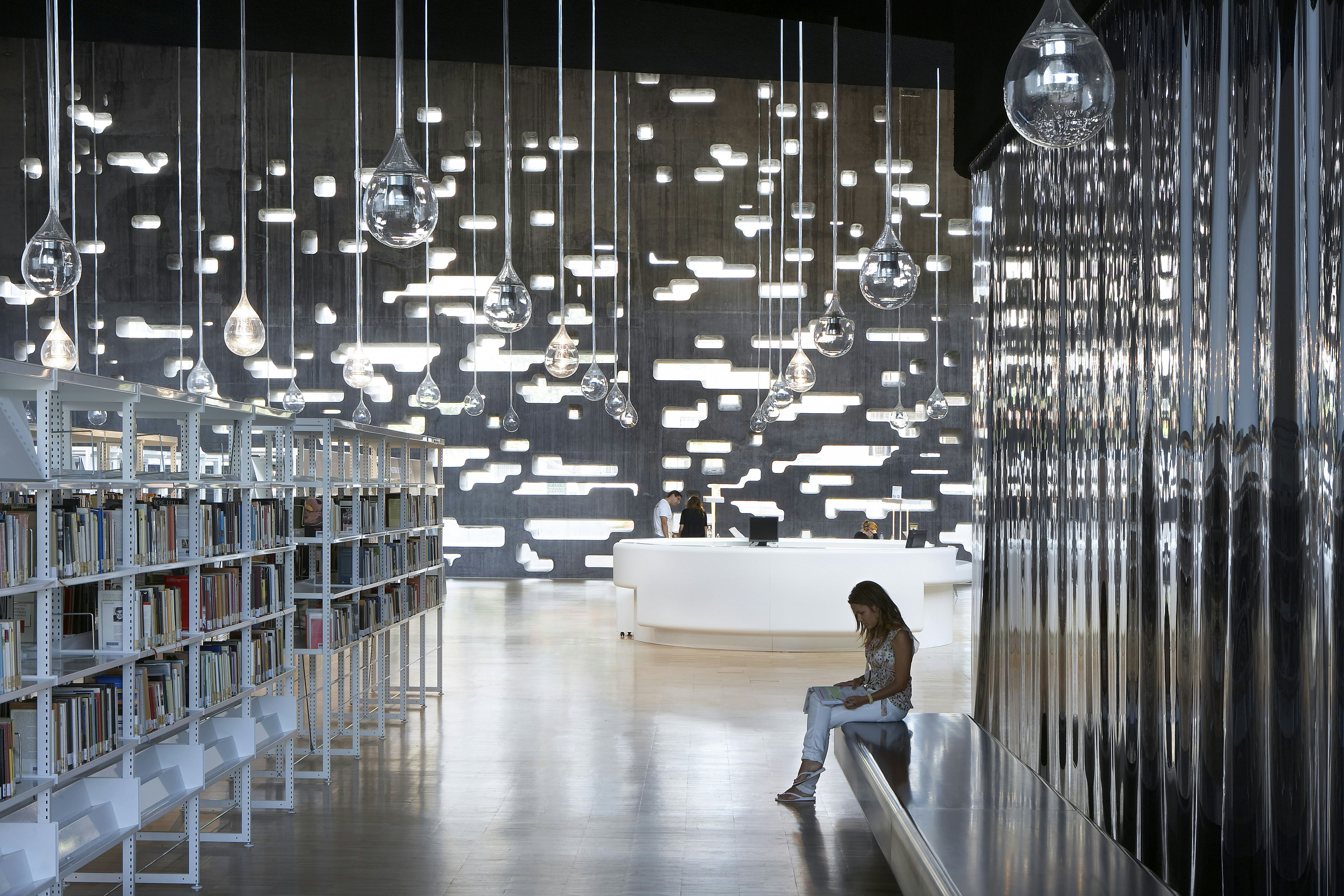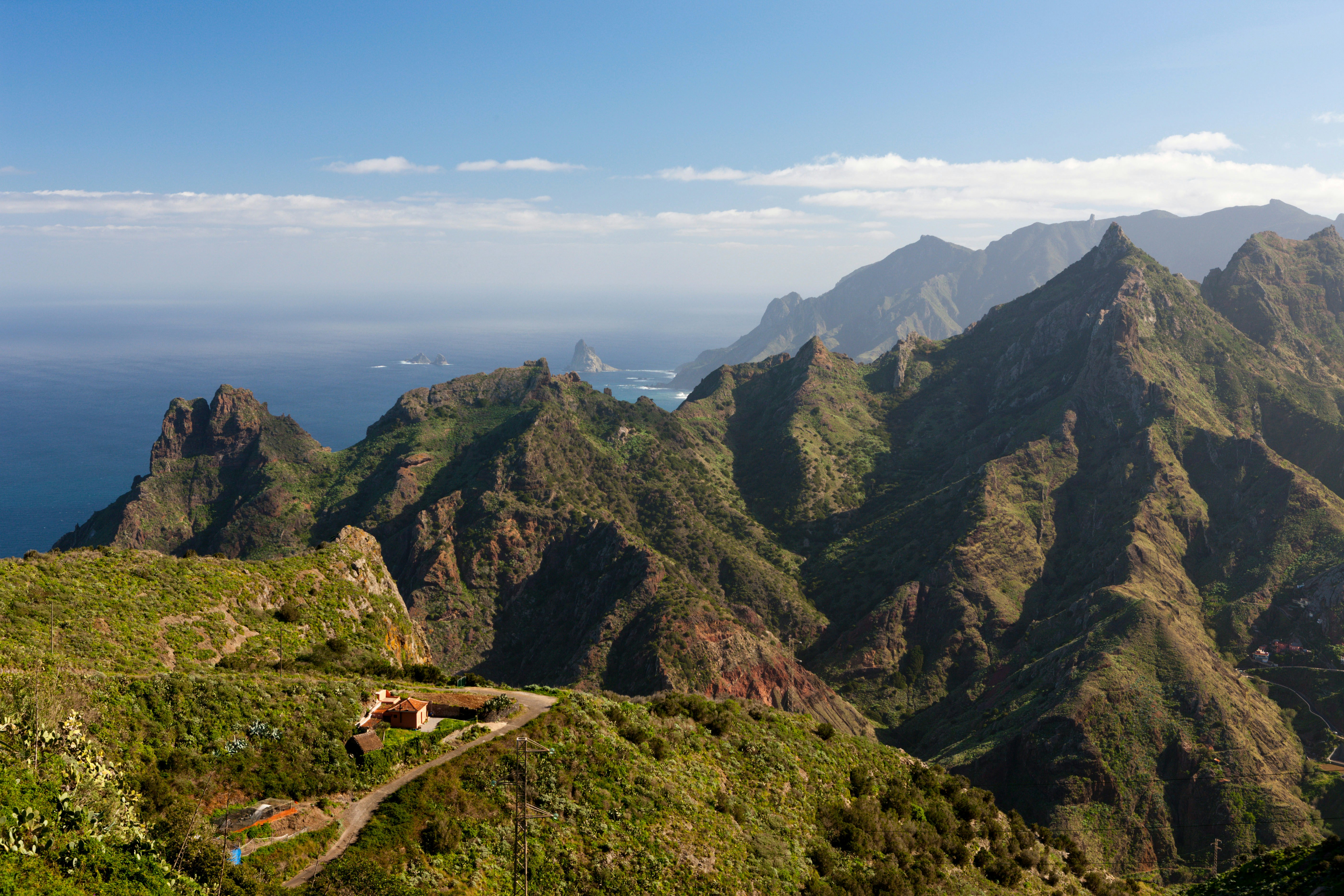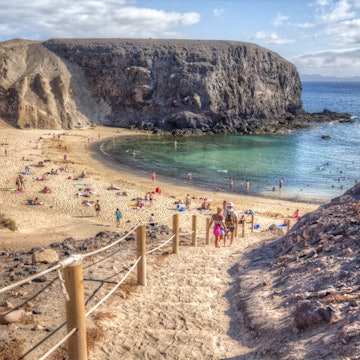

Tenerife has a fascinating history and culture that can be clouded by the holiday brochure-style publicity that concentrates on all those sun, sand and sangria resorts in the island’s south. Take a sidestep east from here and you find a fascinating mix of traditional fishing villages, untamed forests, pristine beaches and even an abandoned leper colony.

East coast villages
Travelling east from the resorts around Playa de las Américas, the first hint of a shift to a lower key, more informal, style of resort is picturesque El Médano. There’s a refreshing youthful edge here and a watersports scene that attracts locals as much as tourists – wind- and kitesurfing sails flutter over the sea like multicoloured butterflies. This sweep of sand also just happens to be the best natural beach on the island, split in two by the drama of a volcanic cone. The whole atmosphere is laid back with a pedestrian core of narrow streets lined with lively, inexpensive bars and restaurants and not a karaoke venue in sight.
A short 15-minute drive due north, the fishing village of Abades is where locals-in-the-know come to scuba dive and snorkel. The town is also home to an abandoned clutch of buildings, including a church, which were constructed to house a leper colony during the Spanish Civil War. Today, though empty and dilapidated, they serve as a reminder of when the disease was rampant here and can be explored freely.
Winding north again you reach extraordinary Candelaria, largely untouched by tourists despite being considered the Canarian equivalent of Lourdes. This atmospheric town buzzes with life, particularly on Sundays, when throngs of pilgrims visit the grandiose Basílica de Nuestra Señora de Candelaria, home to the statue of the Virgen de la Candelaria, patron saint of the entire archipelago. In 1392, this statue was washed up on the shore here and taken to the local Guanche king who worshipped it. When the Spanish conquered the island a century later, they deemed the statue miraculous and it is still worshipped to this day, particularly on 15 August, the day she was supposedly found. The town also has a charming traditional pottery museum, several shops selling religious imagery, and excellent seafood restaurants that cater to a discerning local clientele.

Capital culture
Cultural highs are many in the island’s capital, Santa Cruz de Tenerife, yet it’s a city that is frequently sidestepped by tourists. First and foremost Santa Cruz is a genuine Spanish working town. Shops here are a beguiling combination of idiosyncratic family-owned stores, cool boutiques and Spanish chains. Restaurants similarly run the gamut from fashionable tapas bars to earthy tascas, plus some real one-offs like historic, and former brothel, La Hierbita, which dates from 1893 and specializes in contemporary cuisine based on homespun Canarian classics. The city is also home to several fine museums and galleries – glean a taster of the latter by simply strolling the streets: in 1974 Santa Cruz hosted an international street sculpture exhibition with leading works by such masters of the art as Henry Moore and Joan Miró, all of which remain on display in the historic centre.
Art enthusiasts should also check out the extraordinary Tenerife Espacio de las Artes which has hugely contributed to Santa Cruz’s importance as a cultural capital. Permanent exhibitors here include local Canarian, Óscar Domínguez, considered the third greatest surrealist painter in Spain, after Miró and Dalí. The building is a real show stopper too, unsurprising, given the architects were the same Swiss duo responsible for London’s Tate Modern.
A few steps away is the city’s top attraction, the Museo de la Naturaleza y el Hombre, a natural science and archaeology museum. This place includes an exhibit about the indigenous Guanches' culture and lifestyle, including well-preserved mummies discovered in caves on the island.
Nearby in La Laguna, you can explore Tenerife’s fascinating history further at the excellent Museo de la Historia de Tenerife where you can learn, for example, exactly why the local music has such a distinctive Latino beat; there is hardly one family here that does not have a far-flung relative in South America due to a period of mass emigration in the not-so-distant poverty stricken past.
And finally in the capital there's the evocative great wave of the Auditorio de Tenerife, another example of powerful contemporary architecture that is a stand-out in this city as much for its design as its vigorous year-round programme of world class opera, dance and concert performances.

Sampling seafood with the locals
Continuing your journey northeast, try to time your travels to coincide with a seafood meal at beachfront Cofradía de Pescadores. Sitting on the pristine golden sands of Playa de las Teresitas, 6km northeast of Santa Cruz, in the small fishing village of San Andres, this place is owned by the local fishermen and seafood just doesn’t get any fresher than this.
Untamed Tenerife

Beyond Santa Cruz, at the northeast tip of the island, is the rugged Anaga Mountain peninsula, as far from the coach-tours and clamour of the coastal resorts as it’s possible to get, literally and figuratively. Home to plunging ravines, mist-shrouded forests and rocky pinnacles, this is a tantalising region to explore, with tiny hamlets to discover like picturesque Afur. Just 15 residents call this place home and there’s only one shop/bar, a beguiling clutter of stacked dusty shelves where the elderly owner José will offer you a glass of his eminently drinkable homemade wine for just €1 (and try to sell you a bottle for just a couple of euros more).
There are other equally alluring villages tucked in the creases and crags of the rolling hills and mountains here. Charmorga, nestled in a palm studded valley, has the one café-restaurant, Bar Casa Alvaro, which serves up a tasty conejo con salmoreja (rabbit stew), a dish typical of these parts where virtually every family has a hunting dog and wild herbs, like rosemary and thyme, carpet the hillsides.
Anaga is also just about the best place on the whole island for hiking, with the whole region crisscrossed with marked walking trails. You can pick up detailed maps at the Centro de Visitantes (Cruz de Carmen; 9.30am-4pm) which also has a café, an exhibition centre about the flora and fauna of the area, and the utter surprise of an exquisite small chapel.















